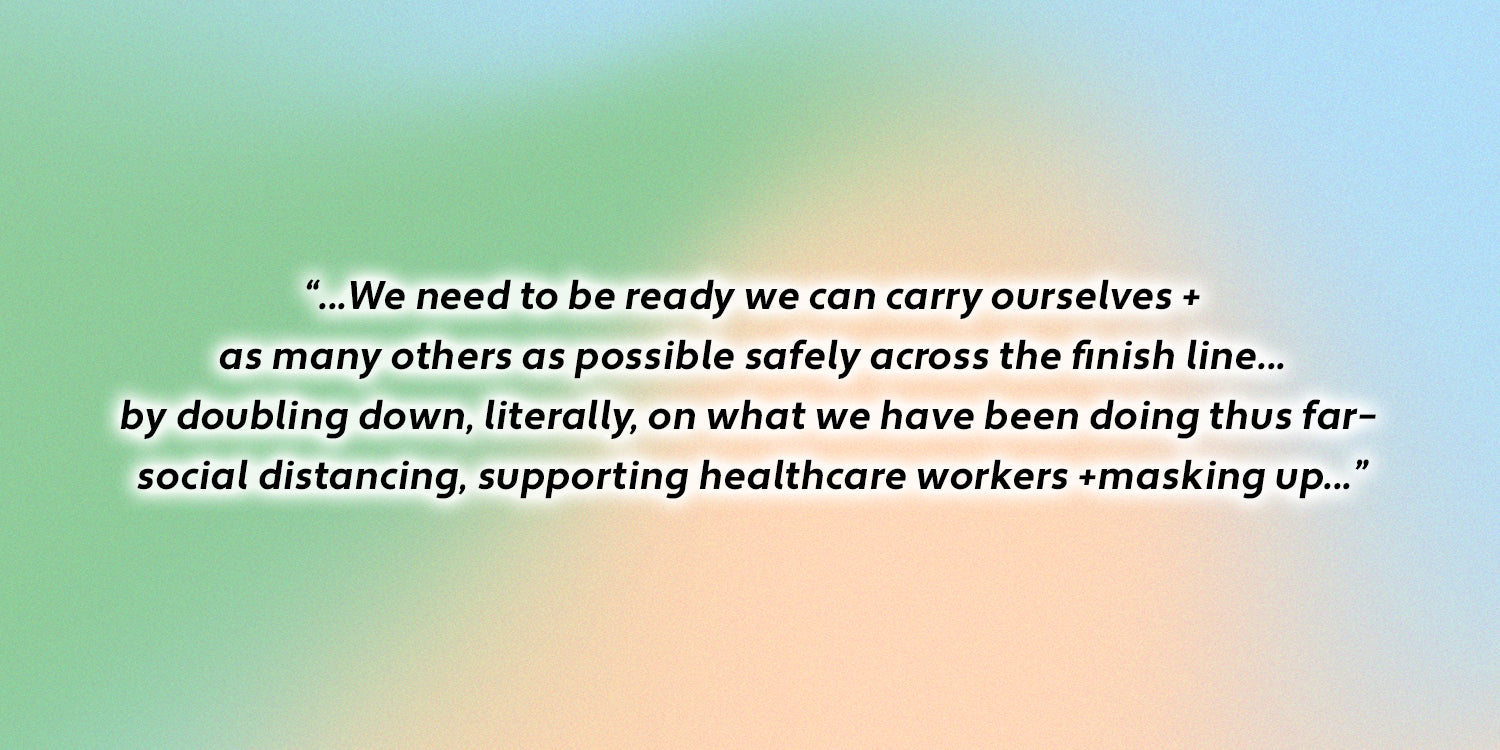Double Masking?
It has now been one year since we first discovered COVID 19–which would go on to cause citywide lockdowns, rock national economies and lead to an entire global pandemic. It’s a grim milestone, to say the least. There are moments where I look back at the road bumpy here–riddled with heartbreak, frustration and uncertainty. Birthdays, graduations, funerals that have quietly come and gone. Our lives have been upended by crisis. But then I look ahead and can start to visualize the reality of overcoming COVID. As we enter the spring season, thousands of Americans are getting vaccinated every day. More and more, nurses are breathing sighs of relief. Grandparents are hugging their grandkids again. The light at the end of the tunnel becomes increasingly brighter, the path to the other side clearer. The end is in sight. This is it, the final stretch. We just need to be ready to ensure we can carry ourselves and as many others as possible safely across the finish line.
This can be accomplished by doubling down, literally, on what we have been doing thus far–social distancing, supporting healthcare workers and masking up. More recently, the CDC recommended two significant ways to improve mask performance by improving fit and, in turn, filtration: 1) wearing a cloth mask over a medical procedure mask (double masking) and 2) knotting and tucking the medical procedure mask. Results are extremely promising. as these measures are something we can all partake in. Double masking does not reduce oxygen supply and isn’t dangerous. While it certainly might make breathing feel more stifled, it is certainly worth it.
Why is it worth it to double mask?
Research by the CDC agency has found that these methods enhance mask effectiveness. Exposure to potentially infectious aerosols is decreased by about 95%.
When should we double mask?
According to Andrea Love, an immunologist and microbiologist, “If you're walking outdoors and aren't in proximity to people outside of your household, a single mask should suffice. If you plan to be near people who aren't in your household, however, even outdoors, "a simple solution is to double-mask".
What is more important–double masking or fit?
The answer is both. These laboratory-based experiments, according to the CDC, “highlight the importance of good fit to maximize overall mask performance”. In short, this means that while there are others, double masking is one sure way to improve mask fit, which is the end goal. Because individual faces come in diverse shapes and different sizes, it is crucial to find a mask that works for your face.
How can I tell if my mask fits properly?
In an article shared by the Washington Post, Linsey Marr, an engineering professor at Virginia Tech who has studied how to maximize mask efficiency, offers these tips for ensuring the best mask fit:
- No open spots around the edges of your mask, especially around your nose, which is why a metal bridge is so important for fitting tightly around the nose
- No gaps in the cheek or chin region
- No “leaks” out of the side.
- Put your hand on the edge to see if you feel anything. When you breathe in, you should feel suction up against your face
- No indication of eyeglasses fogging up or steamy breath coming from the sides of masks while outside
- Another test involves breathing hard in front of a mirror to see if you blink while wearing a mask, which would indicate leakage from the top of the mask.
For additional information, please refer directly to the CDC website here.

